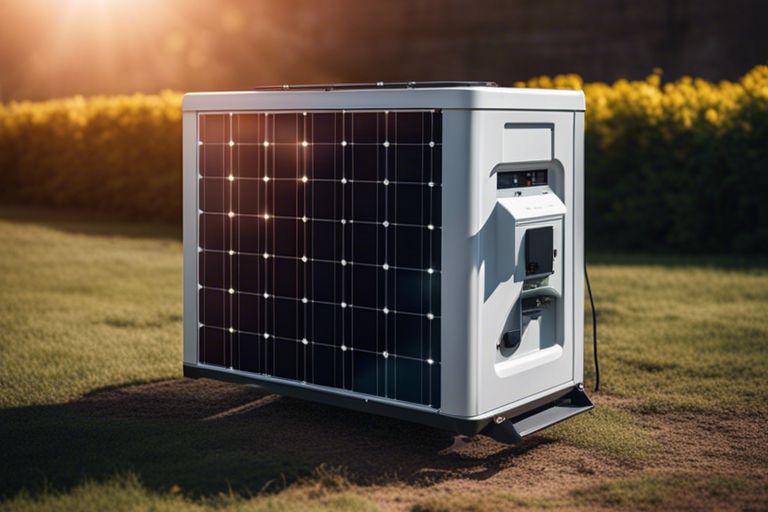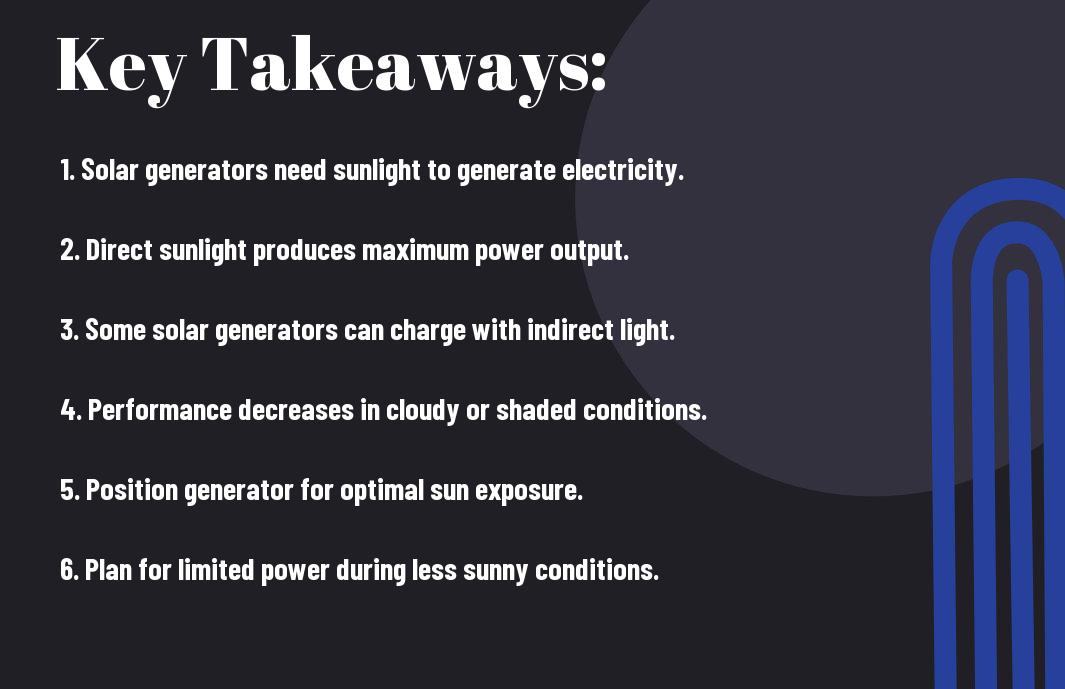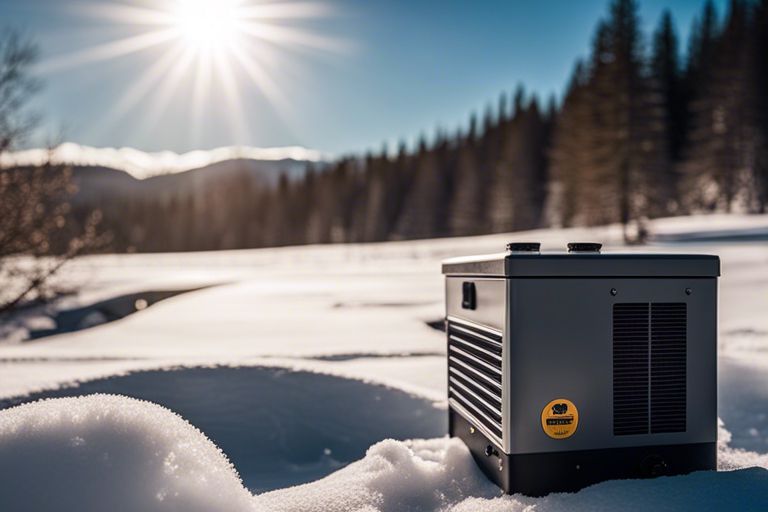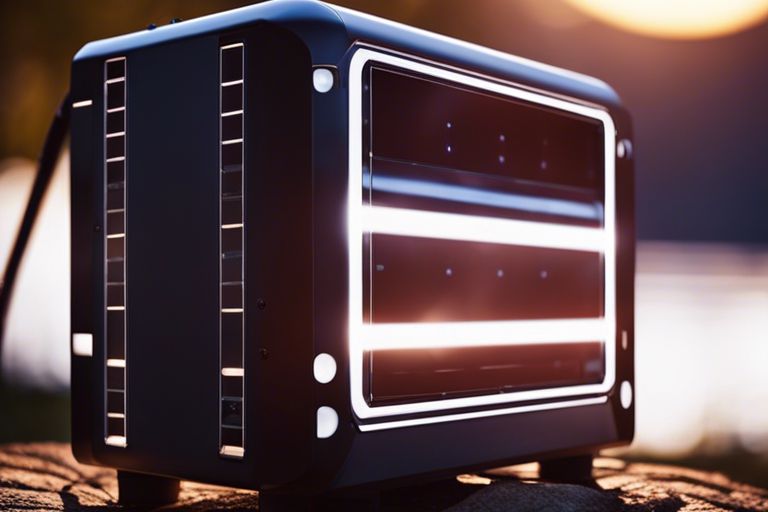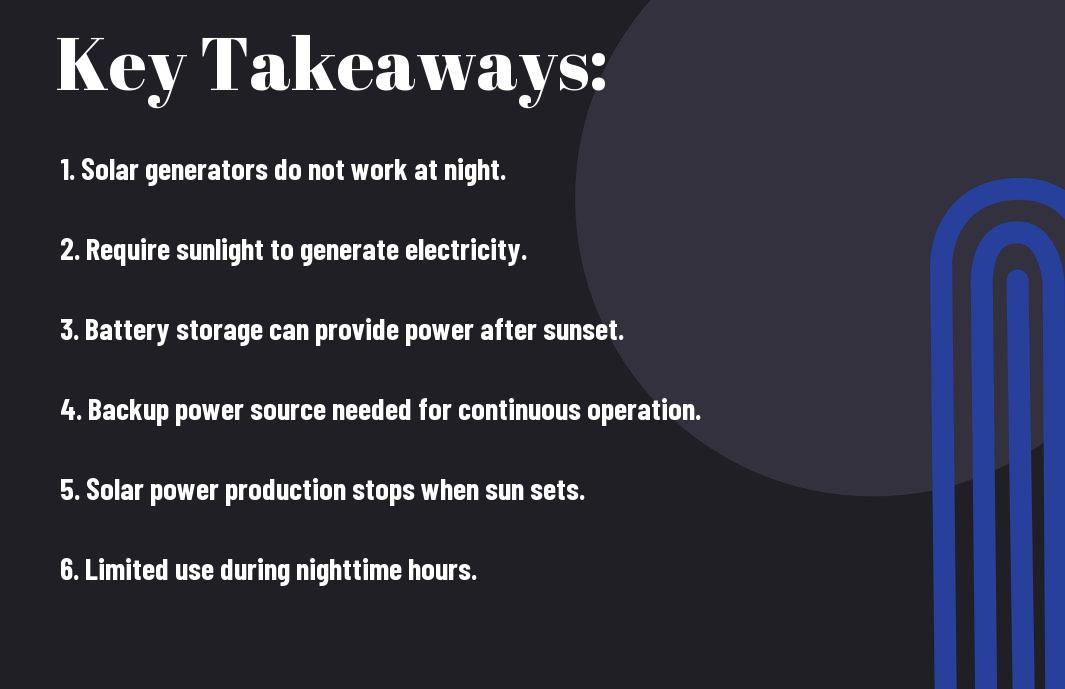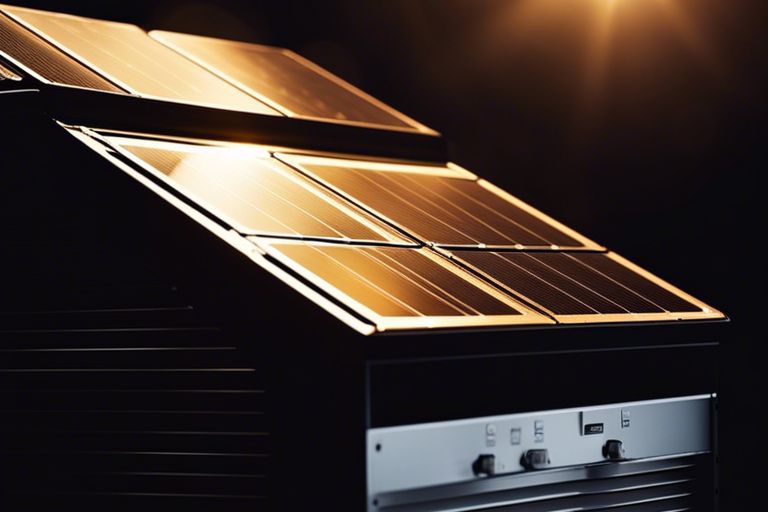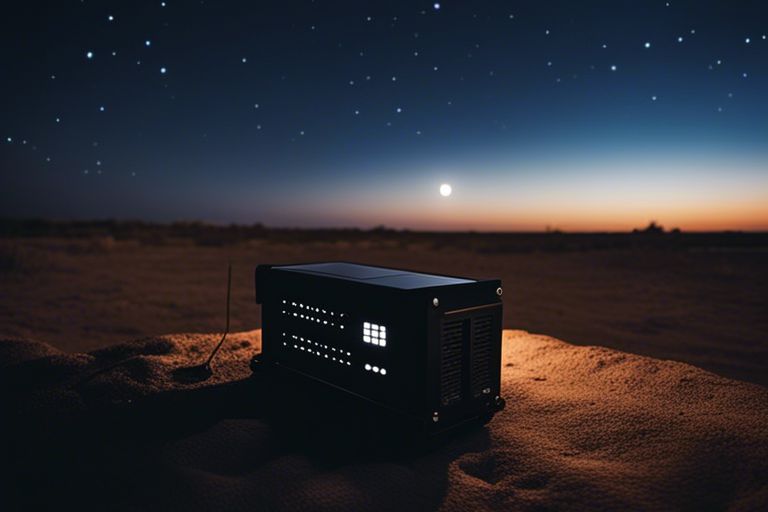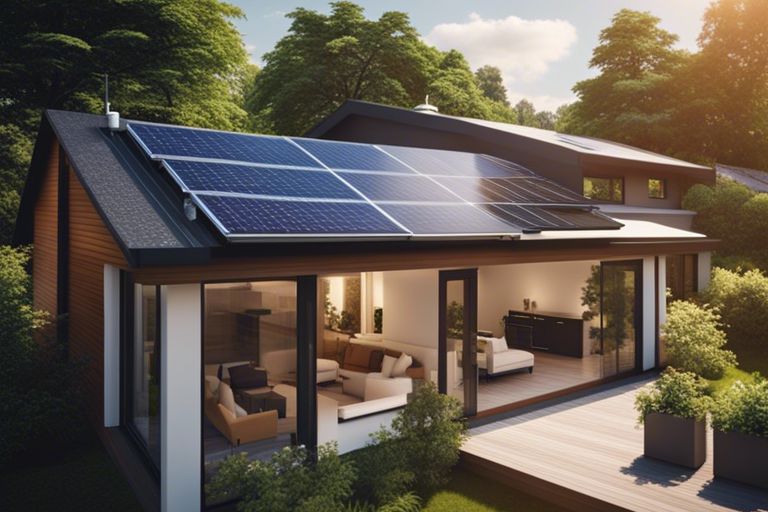Solar generators require direct sunlight to generate electricity efficiently. The process begins with sunlight hitting the solar panels, which convert the sunlight into electricity through a photovoltaic effect. This means that even though ambient light exists, direct sunlight is important for optimal performance. To understand more about solar panels and their functionality, you can read our blog post: Can Portable Solar Panels Work at Night? We Have the Answer.
Key Takeaways:
- Solar generators require sunlight: Solar generators need sunlight to generate power, but they do not always need direct sunlight. They can still produce electricity on cloudy days or when the sun is not directly shining on them.
- Efficiency is reduced in indirect sunlight: While solar generators can operate in indirect sunlight, their efficiency is reduced compared to when they receive direct sunlight. This means they may produce less power during cloudy or shaded conditions.
- Placement matters: Placing a solar generator in an area with direct sunlight will maximize its efficiency and power output. It is important to consider placement and orientation for optimal performance.
What are Solar Generators?
Definition and Functionality
For a better understanding, let’s explore into the definition and functionality of solar generators. Your solar generator is a portable device that harnesses the sun’s energy to convert it into electricity. This device typically consists of solar panels, a charge controller, a battery, and an inverter. The solar panels capture sunlight and convert it into electrical energy, which is then stored in the battery for later use. The charge controller regulates the flow of energy to the battery, while the inverter converts the stored energy into usable electricity to power your devices.
Types of Solar Generators
With various types of solar generators available in the market, it’s necessary to know your options. The two main types of solar generators are portable solar generators and stationary solar generators. Portable solar generators are ideal for outdoor activities such as camping or RV trips, providing a convenient and sustainable power source on the go. On the other hand, stationary solar generators are designed for permanent installation at homes or businesses, offering a reliable backup power solution in case of outages.
| Portable Solar Generators | Stationary Solar Generators |
|---|---|
| Compact and lightweight for easy transport | Permanent installation at homes or businesses |
| Suitable for outdoor activities like camping | Provides backup power during outages |
| Usually have lower power output | Higher power output for greater energy needs |
| Ideal for powering small electronic devices | Can support necessary appliances and electronics |
| Require sunlight to recharge the battery | Can be connected to the grid for continuous power supply |
Perceiving the differences between these two types can help you choose the one that best suits your power needs and lifestyle.
How Do Solar Generators Work?
Photovoltaic Effect
Any time sunlight hits the solar panels of a generator, an amazing process called the photovoltaic effect takes place. This phenomenon involves the absorption of photons from sunlight by the solar cells in the panels. These photons then release electrons in the semiconductor material, generating an electric current. This direct current (DC) is then transferred to an inverter, where it is converted into alternating current (AC) that can power your devices and appliances.
Energy Conversion Process
An important part of how solar generators work is the energy conversion process. The solar panels on the generator absorb sunlight and convert it into electrical energy through the photovoltaic effect. The generated direct current (DC) is then converted into alternating current (AC) by the inverter. This AC power is what you can use to charge your electronics, run your appliances, or even power your home in some cases.
The inverter in a solar generator is a crucial component that ensures the electricity produced is in a usable form for your devices. It not only converts the DC to AC but also regulates the voltage and current to match what is needed by your electronics. This process ensures a safe and stable power source for all your needs.
Conversion
As the sun’s rays are absorbed by the solar panels on the generator, the energy is converted into electricity through the photovoltaic effect. This conversion process allows you to harness the power of the sun and use it to charge your devices, run your appliances, or even provide electricity for your home. It’s a clean, renewable energy source that can help you reduce your carbon footprint and save on energy costs in the long run.
Do Solar Generators Need Direct Sunlight?
Importance of Sunlight for Energy Generation
Sunlight is crucial for solar generators to produce energy. The photovoltaic cells in solar panels convert sunlight into electricity through a process called the photovoltaic effect. Direct sunlight provides the most efficient source of energy as it contains the highest concentration of photons for conversion.
Effects of Cloud Cover and Shading
Cloud cover and shading can significantly impact the energy output of solar generators. When clouds block the sun or shading occurs from nearby objects like trees or buildings, the amount of sunlight reaching the solar panels decreases, leading to reduced energy production. It is necessary to place solar panels in locations with minimal shading and optimal exposure to direct sunlight for maximum efficiency.
Cloud cover can fluctuate throughout the day, affecting the amount of sunlight available for energy generation. It is important to consider the potential impact of varying weather conditions on the performance of solar generators.
Impact of Angle and Orientation on Energy Output
The angle and orientation of solar panels play a critical role in determining energy output. By adjusting the tilt angle and direction of the panels, you can optimize the absorption of sunlight. Panels should be angled to receive the most sunlight during peak daylight hours for optimal energy production.
Proper positioning of solar panels can maximize energy output by ensuring they are directly facing the sun and capturing as much sunlight as possible throughout the day.
Factors Affecting Solar Generator Performance
Not all solar generators need direct sunlight to function optimally. Several factors can affect the performance of a solar generator, including temperature, humidity, air pollution, dust, and maintenance. Understanding these factors can help you maximize the efficiency and longevity of your solar generator.
Temperature and Humidity
Factors affecting solar generator performance:
Temperature Humidity
– High temperatures can reduce – High humidity levels can
the efficiency of solar panels. affect the conduction of
– Excessive heat can lead to electricity produced by the
faster degradation of solar panels. solar panels.
The heat and humidity levels in your environment can impact the overall performance of your solar generator. The efficiency of solar panels can decrease in extremely hot or humid conditions, affecting the energy output of your generator. The placement and insulation of your solar panels play a crucial role in maintaining optimal performance.
Air Pollution and Dust
The presence of air pollution and dust can also affect the performance of your solar generator. Dust accumulation on the surface of solar panels can block sunlight and reduce the efficiency of the system. Air pollution can corrode the panels over time, leading to a decrease in energy production.
Understanding how air pollution and dust can impact your solar generator is vital for its maintenance. Regular cleaning of the solar panels is necessary to prevent dust buildup and maintain optimal performance. Additionally, you may need to consider the installation of air filters or protective coatings to mitigate the effects of air pollution on your solar panels.
Maintenance and Cleaning
To ensure the optimal performance of your solar generator, regular maintenance and cleaning are vital. Dirt, debris, and other environmental factors can accumulate on the surface of solar panels, affecting their efficiency. Regular inspections and cleaning can help prevent any potential issues and ensure maximum energy production.
Plus, maintaining other components of your solar generator, such as the inverter and battery, is crucial for overall performance. By staying proactive with maintenance and cleaning tasks, you can extend the lifespan of your solar generator and enjoy consistent energy production.
Can Solar Generators Work Without Direct Sunlight?
Despite popular belief, solar generators can still function without direct sunlight. While direct sunlight is ideal for optimal energy production, solar panels can still generate electricity on cloudy days or in shaded areas.
Low-Light Conditions and Energy Output
Direct sunlight is the most efficient way to power your solar generator, but it is not the only source of light that can generate energy. Even in low-light conditions, such as on a cloudy day, solar panels can still harness enough sunlight to produce electricity. However, the energy output may be lower compared to bright, sunny days.
Energy Storage and Backup Systems
Storage is crucial when it comes to solar energy systems. Having a reliable energy storage system, such as batteries, can ensure that you have power even when there is no sunlight available. These backup systems can store excess energy generated during sunny periods for use during cloudy days or at night.
For instance, lithium-ion batteries are commonly used in solar energy systems to store excess power. These batteries can be charged during the day and provide electricity when sunlight is not available, ensuring a continuous power supply for your needs.
Alternative Energy Sources for Hybrid Systems
On top of solar power, you can integrate other renewable energy sources, such as wind or hydro power, into a hybrid system to ensure a more consistent energy supply. These alternative sources can complement solar energy and provide power when sunlight is limited.
Output from multiple sources can increase the overall efficiency and reliability of your energy system, making it more resilient to varying weather conditions and environmental factors.
Optimizing Solar Generator Performance
Panel Tilt and Angle Adjustment
Performance: To optimize the performance of your solar generator, it is imperative to adjust the tilt and angle of the solar panels. By tilting the panels towards the sun at the correct angle based on your geographical location, you can ensure maximum sunlight absorption. This will help increase the efficiency of your solar generator and improve overall energy production.
Regular Maintenance and Inspection
Optimizing: Regular maintenance and inspection of your solar generator are crucial to ensure its long-term performance. By keeping the panels clean and free of debris, checking for any damage, and monitoring the system regularly, you can prevent potential issues and maximize the efficiency of your solar generator.
Angle: Additionally, inspecting the wiring connections, inverter, and battery components will help identify any potential problems early on and ensure that your solar generator operates at its peak performance levels.
Energy Efficiency and Load Management
Management: To improve energy efficiency and effectively manage the load on your solar generator, consider investing in energy-efficient appliances and devices. By reducing unnecessary energy consumption and distributing the load evenly throughout the day, you can optimize the performance of your solar generator and make the most of the energy it produces.
Generator: Furthermore, implementing smart load management practices, such as scheduling high-energy tasks during peak sunlight hours, can help maximize the efficiency of your solar generator and reduce overall energy costs in the long run.
Summing up
Conclusively, solar generators do not necessarily need direct sunlight to function efficiently. While direct sunlight can optimize the performance of solar panels, they can still generate electricity even on cloudy days or in indirect light. It is important to place your solar generator in an area where it can receive as much sunlight as possible to maximize its efficiency, but don’t worry if it’s not always in direct sunlight – your solar generator will still be able to convert light into power for your needs.
FAQ
Q: Do solar generators need direct sunlight to work effectively?
A: Yes, solar generators require direct sunlight to operate efficiently. While they can still generate some power on cloudy days or in shaded areas, direct sunlight is needed to maximize their performance.
Q: Can solar generators work at night or in the dark?
A: Solar generators do not generate power in the absence of sunlight. They rely on solar panels to convert sunlight into electricity, so they cannot work at night or in complete darkness.
Q: How can I optimize the performance of a solar generator in areas with limited sunlight?
A: To optimize the performance of your solar generator in areas with limited sunlight, you can consider using a larger solar panel or positioning the panel in the sunniest spot available. You can also store excess power in a battery to use during periods of low sunlight.

